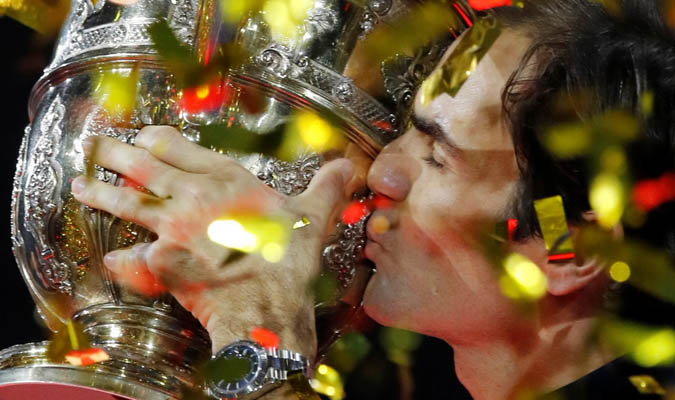Search the latest and greatest job opportunities in sport

Sports marketing is a powerful tool that many brands have leveraged over the years to go viral. Best of all, it works across virtually every industry. Why does it have such power? In short, it comes from the fans, but there’s a bit more to it than that. Here we hear from Tunde Salau, Co-founder of AI-driven influencer platform Vensy about why it works so well and see who’s using it with great success.
Loyalty is Sky High with Sports Fans
“Loyal customers are six times more likely to think better of your brand, are six times more likely to behave better toward your brand, are six times more likely to buy more of your products, are six times more likely to rebuff competitive offers, and are six times more likely to recommend your brand,” loyalty and engagement consultant Robert Passikoff wrote for Forbes.
Passikoff wasn’t merely talking about brand loyalty though. His consultancy had stumbled upon an interesting phenomenon; the loyalty fans have for their team and for their favourite athletes. If you have a favourite sport, club, team, or athlete, you’ve no doubt experienced this connection first-hand. When you see someone wearing a jersey that represents your people, whomever they may be, there’s a connection. A kinship. This type of loyalty doesn’t exist in many industries. It’s unlikely you’ve ever seen someone sipping on tea and struck up a conversation, “Say, that’s my favourite brand too. I really like the undertones in this season’s collection,” yet that happens all the time amongst sport enthusiasts.
Brands Can Leverage this Loyalty through Athlete Influencers

Not surprisingly, loyalty trickles over into things associated with a fan’s favourite club, team, or athlete. For example, luxury watch brands routinely partner up with tennis stars. Roger Federer is rarely seen without his trusty Rolex and Rafael Nadal got a deal with Richard Mille. As people see these athletes wearing specific luxury timepieces, it enhances the visibility of the brands and helps cement them as world-class leaders. Obviously, not everyone can afford a Rolex or Richard Mille, but that’s the point of getting the watches on the wrists of elite athletes; to demonstrate the exclusivity of the brand. Conversely, Nike often pairs with everyday athletes.
The brand loves to showcase stars who came from traditional backgrounds and rose to greatness through talent and perseverance. By extension, the fans of athletes donning Nike brand apparel then associate the brand with triumph, and they also begin wearing it because it makes them feel like they’re part of the athlete’s team. They, too, are winners.
Whether its clothing they wear, phones they use, shoes they run in, or food they eat, fans want to emulate the athletes they feel a connection with. Brands know this. Quite simply, working with athlete influencers can achieve any number of goals, from increasing loyalty to generating more brand recognition, getting more website hits, moving into new markets, or appealing to a specific audience. These things naturally result in greater sales and profits.
Sports Marketing Goes Viral
It’s no surprise, then, that sports marketing has the ability to help brands go viral. Take, for example, Betfair’s Back Yourself campaign. Although this particular marketing scheme focused on events and everyday athletes, it opened new doors for the brand and got people who might not otherwise place a bet onto their site. The premise was simple; participants in the 2018 London Marathon bet on themselves at no charge and their winnings go to their charity of choice! Inclusivity at its highest order!

Paddy Power also leveraged fan bases to generate a whirlwind a few years back when photos of “C’MON ENGLAND” paired with the P.P. signature carved into an Amazonian rain forest began circulating just before the World Cup. Naturally, this resulted in a social media firestorm that the company couldn’t (and didn’t want to) contain. In fact, their social media pros fanned the flames by responding to angry rants posted by accounts with large followings, essentially telling them not to get upset that the company had ruined the rainforest. The final result was that multiple social media platforms got pulled into the melee. Redditors were even dissecting the photos and deemed them authentic, while related hashtags started trending on Twitter. Paddy Power’s blog on the subject netted 160,000 views in just 24 hours as well. Of course, the images were faked, and this detail was released a bit later. Paddy Power announced the whole thing was to generate awareness about the rain forests, which then generated laughs and loads of good press.
Gaming companies aren’t the only ones to win big with sports marketing though. The second most shared ad of the 2016 Olympics featured Michael Phelps promoting Under Armour. Although simple, the Rule Yourself campaign highlighted the hard work athletes do prior to competing and showed Phelps wearing the brand’s apparel as he prepared.
Back in the States, which are obviously not known for their love of football, the newly-minted Orlando City Football Club realised it needed a clever way to create awareness for the game. For this, the club turned to a low-budget social media stunt. They hid tickets to games throughout the city as a scavenger hunt, then promoted it via several social media sites, offering up clues about where tickets were stashed. Fans eagerly jumped into the game and began sharing details as they scoured the city. As tickets were found, the club aired videos of excited fans showing off their tickets.
Originally published by our partner Digital sport . Read the original article here .
Interested in developing your career within Sports Marketing ? Click here to search the latest opportunities. Alternatively, give your career a boost by signing up to our ‘Jobs by Email’ and get the latest jobs relevant to you and your career ambitions direct to your inbox.
Search the latest and greatest job opportunities in sport
In the world of professional sports, sponsorship represents a significant source of revenue and plays a vital role for t...
Read moreThe sports industry is a vibrant and multifaceted industry, made up of a diverse range of sectors that shape its global ...
Read morePablo Romero, director of protocol at Sevilla FC and lecturer in the UCAM Master's Degree in Sports Management, shares t...
Read more